She was born in Chicago on Oct. 17, 1917. The talented actress and singer’s Hollywood career was hurt by being blacklisted. But she starred in several film-noir titles, such as “Raw Deal,” “Mary Ryan, Detective” and “Kid Glove Killer” as well as “Carnegie Hall,” a 1947 musical directed by noir master Edgar G. Ulmer, and the 1971 anti-war drama “Johnny Got His Gun.”
‘Fury’ hits hard with a powerful story and fine performances
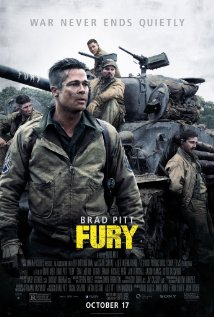 Fury/2014/Columbia Pictures/134 min.
Fury/2014/Columbia Pictures/134 min.
Writer/director David Ayer’s “Fury,” a World War II drama, is a force to behold, with one of Brad Pitt’s finest performances.
The movie is set in April of 1945 and the war is coming to an end, but this is no gradual winding down. Instead, it’s a tooth and nail fight, a savage final struggle to defeat the Nazis on the European front. Pitt plays an army sergeant nicknamed Wardaddy who commands a Sherman tank and a crew of men.
Boyd (Shia LaBeouf) clings steadfastly to religion to get him through. Jon Bernthal’s Coon and Michael Peña’s Gordo gave up hope a long time ago. Logan Lerman, as a new addition named Norman, shows us a heart-wrenching evolution from paper-pusher to Nazi-slayer.
The soldiers hold their own for a while but, as they push through enemy lines, it becomes frighteningly clear that they are far outnumbered by the Germans.
Pitt melds fierce intensity and psychological battle scars with layers of mystery, dignity and reserve. The rest of the cast (including Anamaria Marinca and Alicia von Rittberg as German women the men encounter) match him, beat for beat, thanks to assured and nuanced direction from Ayer.
‘Fury’ can be hard to watch at times – it’s gory and graphic from the start – but war is hell, remember. And this is one hell of a story.
“Fury” opens in theaters today.
Betty Halbreich dishes on decades of plain speaking and proper sizing in ‘I’ll Drink to That: A Life in Style’
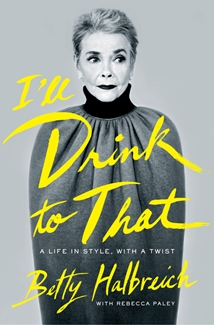 My favorite tip from Betty Halbreich, a straight-shooting Svengali of style, is this: “I would never in a million years dream of going out in public barefaced. I have to put on lipstick and mascara even to travel half a block for a loaf of bread. How do I know I won’t meet Prince Charming on the way?”
My favorite tip from Betty Halbreich, a straight-shooting Svengali of style, is this: “I would never in a million years dream of going out in public barefaced. I have to put on lipstick and mascara even to travel half a block for a loaf of bread. How do I know I won’t meet Prince Charming on the way?”
Most mornings, the corner store Halbreich heads to is the world-famous luxury emporium Bergdorf Goodman at 5th Avenue and 58th Street, near the Plaza Hotel and Central Park. Halbreich, 86, runs the store’s Solutions (personal shopping) department; she started working there in 1976.
In her latest book “I’ll Drink to That: A Life in Style” (co-written with Rebecca Paley), the vendeuse of elegance looks back on nearly nine decades of plain speaking and proper sizing.
(This is Halbreich’s second book. She appeared in the 2013 documentary “Scatter My Ashes at Bergdorf’s” and is working with Lena Dunham on a new HBO show.)
Growing up on the South Side of Chicago, an only child of wealthy parents, one of her favorite pastimes was playing in her mother’s closet. As a wife, mother and socialite in New York City, she passed her days shopping and dressing to the nines. I loved hearing about the luscious meals her parents served when entertaining and her swanky nightlife as a newlywed in Manhattan.
Halbreich’s seemingly enviable life, however, was both charmed and cursed. After her marriage fell apart and she attempted suicide, she found solace through work.
She’s quick to point out, though, that she’s not a great saleswoman. In fact, she never learned to use the cash register. Her true talent is seeing what clients crave under the sequins, lace, taffeta or feathers – advice, a surrogate mother, a shoulder to cry on.
Of course, it doesn’t hurt that Halbreich also has an unerring eye, uncommon discipline and understated good taste. These traits have helped her dress Candice Bergen, Liza Minnelli, Mia Farrow, Betsy Cronkite and Joan Rivers, just to name a few. She even instructed former President Ford on the right way to hold a garment bag.
Halbreich’s recollections make a breezy read – easy as slipping into a favorite pair of jeans. Denim, by the way, is something Halbreich wouldn’t be caught dead in.
Modern filmmakers offer their takes on neo-noir
As always, noir is in the zeitgeist. Filmmakers seem eternally inspired by the genre or, as some would argue, style. Here are three new projects that have roots in the dark alleys and shady corners of the past.
“This Last Lonely Place” is a thriller by Steve Anderson about an Iraq war vet/cab driver and his twisted, noir-drenched drive through the mean streets of Los Angeles. Anderson’s film was executive produced by the Humphrey Bogart Estate and recently received high praise from Leonard Maltin.
Documentary writer/director Sonia Bible is working on a film called “The Witch of Kings Cross” about an outspoken artist named Rosaleen Norton. Also an occultist, Norton scandalized 1950s Australia with her erotic paintings, brazen sex life and criticism of Christian middle-class values.
Meanwhile, director Justin Baird’s noir comedy “Mike Case in: The Big Kiss Off” is now available on Amazon Prime: http://amzn.to/1nmH9gU
Film noir stalwart James Ellroy to read from his new novel
 There are two cool events going on Thursday night in the noir capital of the world, i.e. Los Angeles.
There are two cool events going on Thursday night in the noir capital of the world, i.e. Los Angeles.
Master storyteller James Ellroy will read from his new novel, “Perfidia,” set in 1941 LA.
Ellroy’s other novels include: “The Black Dahlia,” “The Big Nowhere,” “L.A. Confidential,” “White Jazz,” “American Tabloid,” “The Cold Six Thousand” and “Blood’s a Rover.”
Several of his books have been made into movies. This influential writer was born in Los Angeles in 1948.
Publishers Weekly calls the new book: “A sprawling, uncompromising epic of crime and depravity.” We’re in.
The reading is at 7:30 p.m. at Skylight Books.
The Autry Center is hosting Celebrate Steinbeck! The Road Trip as Inspiration, in honor of the 75th anniversary of “The Grapes of Wrath.”
Artists will recount The Grapes of Wrath Journey, a 2013 retracing of the route taken by the Joad family. The event starts at 6 p.m.
‘Whiplash,’ by writer/director Damien Chazelle, works on many levels, including as a neo-noir tale of obsession
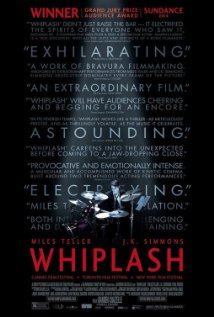 Strictly speaking, “Whiplash,” about a jazz student going to crazy lengths to please his maniacal teacher, is a drama. But unstrictly speaking, “Whiplash” counts as neo-noir.
Strictly speaking, “Whiplash,” about a jazz student going to crazy lengths to please his maniacal teacher, is a drama. But unstrictly speaking, “Whiplash” counts as neo-noir.
How so? Shot in LA (in 19 days) but set in New York City, the urban landscape has a stark, unforgiving, slightly menacing vibe. Andrew, the sensitive but determined student (Miles Teller) at an elite fictional music conservatory, steers his passion into obsession, blood dripping from his fingers, as he determines to be the world’s greatest jazz drummer, à la Buddy Rich.
Andrew shuns his ever-supportive father (Paul Reiser) and, perhaps thinking he’s in charge of his destiny, he stubs out his nascent romance with a lonely movie usher/Fordham student named Nicole (Melissa Benoist) feeling that it’s only a matter of time before he will resent her.
Andrew meets his match in the form of the tyrannical, abusive teacher Fletcher (J.K. Simmons), always dressed in black with immaculate posture and a perfectly shined bald head, who believes that verbal whippings and public humiliation will push his musicians into the realm of greatness.
Most noirishly, as the story unspools, there are subtle signs that we somehow, without knowing quite when or how, have left reality behind and are stranded in a dream-world of desperation, angst and paranoia. The dramatic lighting and tense pacing also contribute to the edgy, one-foot-in-hell mood. Cleverly, though, the story ends on a high note – a triumph of Andrew’s talent and perseverance.
“Whiplash,” written and directed by Damien Chazelle, is one of my favorite films this year. Chazelle is both imaginative and precise in his storytelling; the Harvard University grad clearly knows what’s like to navigate a path at a competitive, elite institution. And he clearly knows jazz – in fact, both he and Teller play the drums. “Whiplash” also functions as an homage to the art form.
To me, though, Chazelle’s greatest accomplishments are the memorable, moving performances from the entire cast, especially Teller, looking a bit pudgier and pastier than usual, as he goes from schlubby to super-focused, and Simmons as the quietly rageful, ready-to-pounce sadist.
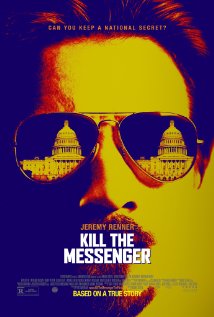 “Whiplash” opens today in theaters.
“Whiplash” opens today in theaters.
ALSO OPENING TODAY:
“The Judge,” directed by David Dobkin. Compelling performances from a great cast (Robert Downey Jr., Robert Duvall, Vera Farmiga, Billy Bob Thornton), but the bloated, overlong script weighs this court-room drama/father-son story down. Way down.
And still on my list to see: “Kill the Messenger” is a conspiracy thriller directed by Michael Cuesta and starring Jeremy Renner about drug smugglers with links to CIA. Based on true story of Pulitzer Prize-winning journalist Gary Webb.
Also: “Addicted,” a story of adultery, directed by Bille Woodruff and starring Sharon Leal.
Film Noir File: Hitchcock’s favorite: ‘Shadow of a Doubt’
By Film Noir Blonde and Mike Wilmington
The Film Noir File is FNB’s guide to classic film noir, neo-noir and pre-noir on Turner Classic Movies (TCM). All movies below are from the schedule of TCM, which broadcasts them uncut and uninterrupted. The times are Eastern Standard and (Pacific Standard).
Pick of the Week
“Shadow of a Doubt”
(1943, Alfred Hitchcock). Sunday, Oct. 12; 8 p.m. (5 p.m.)
A bright and beautiful small town girl named Charlotte “Charlie” Newton (Teresa Wright) is bored, bored with her well-ordered home in her pretty Norman Rockwellish little city of Santa Rosa, California. It’s a place where trees line the sunlit streets, everyone goes to church on Sunday and lots of them read murder mysteries at night. Charlie has more exotic dreams. She adores her globe-trotting, urbane Uncle Charlie Oakley (Joseph Cotten) – for whom she was nicknamed – and is deliriously happy when he shows up in Santa Rosa for a visit.
But Uncle Charlie has some secrets that no one in his family or among their friends knows about. Not Uncle Charlie‘s adoring sister (Patricia Collinge), nor his good-hearted brother-in-law (Henry Travers), nor their murder-mystery-loving neighbor Herbie (Hume Cronyn), nor Charlie herself.
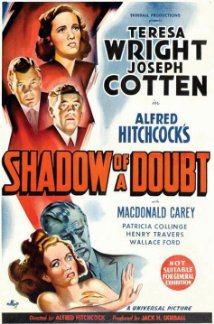 Uncle Charlie, who conceals a darker personality and profession beneath his charming persona, is on the run, pursued by a dogged police detective (Macdonald Carey), who suspects him of being a notorious serial killer – a murderer who seduces rich old widows, kills them for their money, and whose signature tune and nickname come from Franz Lehar’s “Merry Widow” waltz. As handsome, cold-blooded Uncle Charlie, Cotten, who called “Shadow” his personal favorite film, is, with Robert Walker and Anthony Perkins, one of the three great Hitchcockian psychopaths.
Uncle Charlie, who conceals a darker personality and profession beneath his charming persona, is on the run, pursued by a dogged police detective (Macdonald Carey), who suspects him of being a notorious serial killer – a murderer who seduces rich old widows, kills them for their money, and whose signature tune and nickname come from Franz Lehar’s “Merry Widow” waltz. As handsome, cold-blooded Uncle Charlie, Cotten, who called “Shadow” his personal favorite film, is, with Robert Walker and Anthony Perkins, one of the three great Hitchcockian psychopaths.
“Shadow of a Doubt,” released in 1943, was Hitchcock’s sixth American movie and the one he often described as his favorite. As he explained to Francois Truffaut, he felt that his critical enemies, the “plausibles,” could have nothing to quibble about with “Shadow.” It was written by two superb chroniclers of Americana, Thornton Wilder (“Our Town”) and Sally Benson (“Meet Me in St. Louis”), along with Hitch‘s constant collaborator, wife Alma Reville. The result is one of the supreme examples of Hitchcockian counterpoint – an American small town nightmare: with a sunny, beguiling background against which dark terror erupts.
Friday, Oct. 10
6:30 p.m. (3:30 p.m.): “Illegal” (1955, Lewis Allen). Edward G. Robinson in one of his better later roles: as a district attorney turned big-bucks defense attorney for mostly rich guilty clients, who tries to regain his integrity with a sensational murder trial. Directed by Lewis Allen (“Desert Fury,“ “Suddenly”); based on Elliot Nugent’s 1932 “The Mouthpiece.” With Nina Foch (the defendant), Jayne Mansfield, Hugh Marlowe and Albert Dekker.
Sunday, Oct. 12
8 p.m. (5 p.m.): “Shadow of a Doubt” (1943, Alfred Hitchcock). See Pick of the Week. [Read more…]
Film Noir File: Marvelous mystery appears in ‘Lady Vanishes’
By Film Noir Blonde and Mike Wilmington
The Film Noir File is FNB’s guide to classic film noir, neo-noir and pre-noir on Turner Classic Movies (TCM). All movies below are from the schedule of TCM, which broadcasts them uncut and uninterrupted. The times are Eastern Standard and (Pacific Standard).
Pick of the Week
“The Lady Vanishes” (1938, Alfred Hitchcock). 10 p.m. (7 p.m.) Saturday, Oct. 4.
In “The Lady Vanishes,” his marvelous 1938 mystery classic set aboard a train racing though the Balkans, Alfred Hitchcock pushes the romantic-comedy-thriller form to near perfection. It’s one of the most purely entertaining movies he ever made, and it can be watched over and over again with no diminution of pleasure. With Michael Redgrave, Margaret Lockwood, Paul Lukas and Dame May Whitty.
Read the full review here.
Sunday, Oct. 5
10 a.m. (7 a.m.): “Scarface” (1932, Howard Hawks). With Paul Muni, George Raft, Ann Dvorak, Karen Morley and Boris Karloff. Reviewed in FNB on July 17, 2014.
12 p.m. (9 a.m.): “Cool Hand Luke” (1967, Stuart Rosenberg). With Paul Newman, George Kennedy, Jo Van Fleet, Strother Martin and Dennis Hopper. Reviewed in FNB on March 21, 2014.
Tuesday, Oct. 7
7:45 a.m. (4:45 a.m.): “The Letter” (1940, William Wyler). With Bette Davis, Herbert Marshall, Gale Sondergaard and James Stephenson. Reviewed in FNB on Sept. 19, 2012).
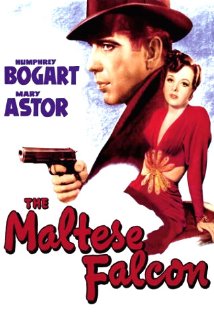 9:30 a.m. (6:30 a.m.): “The Maltese Falcon” (1941, John Huston). With Humphrey Bogart, Mary Astor, Peter Lorre, Sydney Greenstreet, Elisha Cook, Jr. and Ward Bond. Reviewed in FNB on March 11, 2014.
9:30 a.m. (6:30 a.m.): “The Maltese Falcon” (1941, John Huston). With Humphrey Bogart, Mary Astor, Peter Lorre, Sydney Greenstreet, Elisha Cook, Jr. and Ward Bond. Reviewed in FNB on March 11, 2014.
1:15 p.m. (10:15 a.m.): “The Unfaithful” (1947, Vincent Sherman). With Ann Sheridan, Lew Ayres, Zachary Scott and Eve Arden. Ann Sheridan, with lots of oomph, takes over Bette Davis’ old role (and Jeanne Eagels’) in this Americanized remake of the film versions of the classic W. Somerset Maugham short story “The Letter.” (See above.)
3:15 p.m. (12:15 p.m.): “Where Danger Lives” (1950, John Farrow). With Robert Mitchum, Faith Domergue and Claude Rains. Bob Mitchum on the run with one of his blander leading ladies, Faith Domergue. No “Out of the Past,” but it holds your interest.
4:45 p.m. (1:45 p.m.): “Strangers on a Train” (1951, Alfred Hitchcock). With Farley Granger, Robert Walker, Ruth Roman and Leo G. Carroll. Reviewed in FNB on April 14, 2011.
6:30 p.m. (3:30 p.m.): “A Kiss Before Dying” (1956, Gerd Oswald). With Robert Wagner, Jeffrey Hunter and Joanne Woodward. Reviewed in FNB on Nov. 10, 2012.
Tense neo-noir ‘Gone Girl’ is the go-to movie this weekend
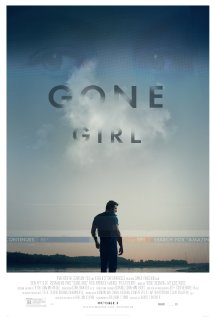 In the poster for “Gone Girl,” star Ben Affleck stands near a body of water – not a sandy white beach burnished by the sun, but a murky strip of gray bounded by non-descript industrial buildings. A dump, in other words, and just the kind of place that could drive you crazy, especially if the rest of your life isn’t going so great and if your relationship is, well, a bit frayed.
In the poster for “Gone Girl,” star Ben Affleck stands near a body of water – not a sandy white beach burnished by the sun, but a murky strip of gray bounded by non-descript industrial buildings. A dump, in other words, and just the kind of place that could drive you crazy, especially if the rest of your life isn’t going so great and if your relationship is, well, a bit frayed.
Director David Fincher conveys that strong, vivid sense of place (North Carthage, Missouri) as well as a mood of dour frustration (Affleck’s Nick Dunne is in a strained marriage) within the first few minutes of “Gone Girl,” the much-anticipated neo-noir movie based on Gillian Flynn’s best-selling novel. (Flynn also wrote the script.)
“When I think of my wife, I always think of her head,” Nick tells us. Literally, as he touches her sleek blonde hair, and figuratively: “What are you thinking, Amy? How are you feeling? Who are you? What have we done to each other? What will we do?”
It seems that Nick’s fate is to ponder these questions and consistently come up short on answers. That’s because elegant and efficient Amy (Rosamund Pike), a trust-fund only child from an upper-crust East Coast family, is always several steps ahead of Nick, a good-looking, polite Midwestern guy who fancies that he might one day write the great American novel. They meet in Manhattan, where they both work as magazine writers but, when they lose their jobs, they move back to Nick’s hometown, which has been decimated by the recession.
On the day of their fifth wedding anniversary, Amy mysteriously disappears and Nick becomes the No. 1 suspect. As the drama unfolds, we discover that the answers to the questions about Nick and Amy are far more devastating than we could have imagined.
Flynn’s smart, multi-layered script (which closely follows her book) is just right for Fincher’s capable hands. The film is tense, gripping and darkly funny, and Fincher draws stellar performances from Affleck and Pike as well as Kim Dickens as the low-key but tenacious lead detective on the case, Tyler Perry as Nick’s slick, smooth-talking defense attorney and Carrie Coon as Margo, Nick’s straight-shooting and sarcastic twin sister.
The plot of both the book and movie eventually becomes fantastic, even absurd. Sticklers for plausibility likely will grumble by the end.
But that didn’t bother me much because I think Flynn’s aim, as outlined on page one, was to raise thorny questions about the façades we present when dating, the fronts we gain from our jobs (or lack thereof), the compromises of intimacy and the unconscious crafting of a joint identity, the waning and waxing distance between two people over time, and the creeping self-denial and even outright lies that sometimes prop up a relationship, not to mention the current state of sexual power and politics. (The “cool-girl” soliloquy, particularly in the book, is downright searing.)
It’s a lot to think about and Flynn makes it entertaining to boot. That said, there is one central flaw to both the movie and the book, and that’s a deep connection, an undeniable, goose-pimply intensity, between Nick and Amy. That needs to be there for the story to work completely and it’s missing – there isn’t much chemistry, let alone a combustible, powerful passion. In establishing Amy as the alpha girl, Nick’s character remains a bit dull and two-dimensional.
Granted, she’s drawn to the good-looking, affable Milquetoast because she can boss him around, but a Type A like Amy would tire of mere arm candy and look for more of a challenge – someone to push back a bit and stand up to her. After all, she appears to be the golden girl with the world as her oyster.
And there are still a few stand-up, take-charge guys out there, right?
“Gone Girl” opens today in theaters.
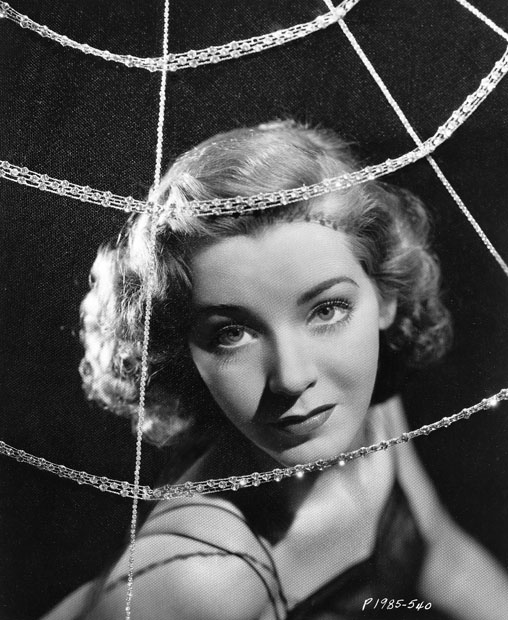





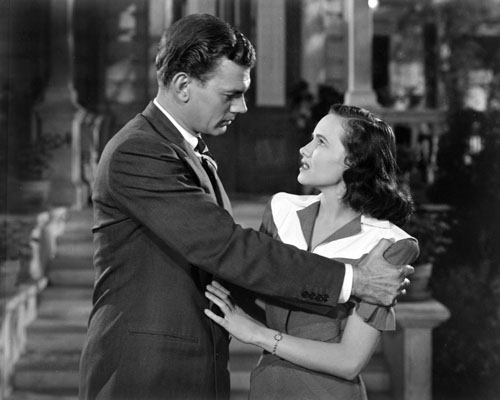
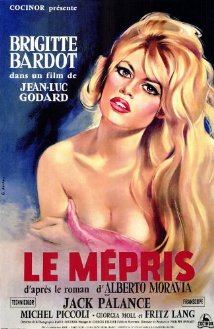
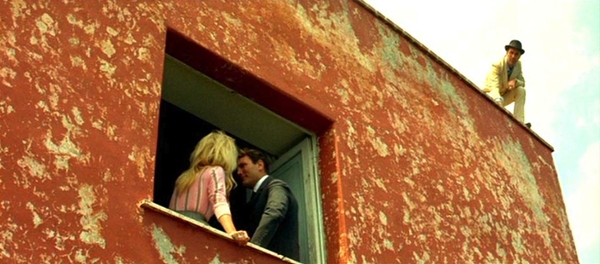

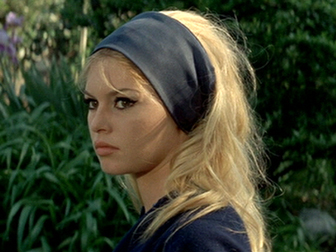
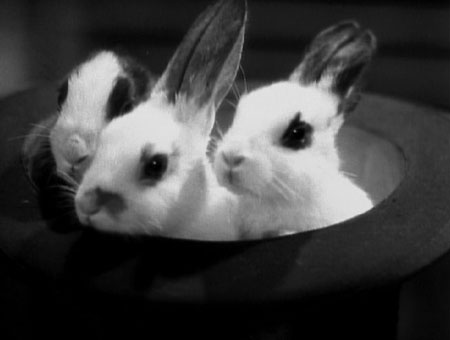
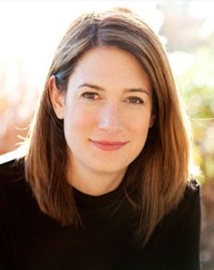





From FNB readers